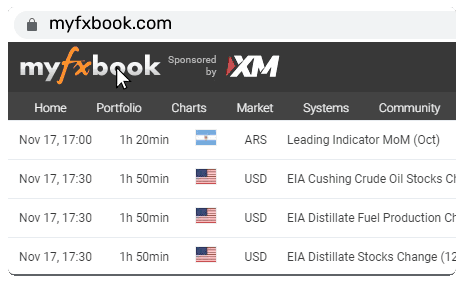USD Gains Ground as Gold Slips, AUD Drops | 25th July 2025
USD Climbs, Gold Falls
The US Dollar extended its rebound on Friday, 2025, buoyed by mixed but generally supportive economic data. This strength pressured gold prices lower and dragged the Australian Dollar further down from recent highs. Meanwhile, the New Zealand Dollar held firm above 0.6000 as risk appetite lingered. In Japan, the Yen saw mild movement, while the Euro held its ground against the Yen following solid Tokyo CPI figures. Market participants are closely watching upcoming US data releases for clues on Fed policy direction.
Gold Forecast (XAU/USD)
Current Price and Context
Gold (XAU/USD) is trading in the $3,360–$3,365 range, drifting lower for a third straight session amid renewed USD strength. Risk-on sentiment from advancing trade deal prospects continues to suppress demand for safe-haven assets, keeping bullion close to its weekly trough. Despite trade optimism, lingering uncertainty around the Federal Reserve’s policy path has limited further downside pressure.
Key Drivers
Geopolitical Risks: Positive developments in US‑Japan and US‑EU trade discussions have diminished risk-off flows, reducing traction for gold as a safe-haven. Emerging regional risks—such as escalating border tensions in Asia—may provide modest intermittent support
US Economic Data: Mixed US macro readings—particularly in labor and services sectors—have kept the dollar buoyant, further weighing on gold prices. Durable goods orders and jobless claims will be closely watched for possible near-term impact.
FOMC Outcome: Ongoing uncertainty over timing and pace of potential rate cuts has prevented sharp USD gains, thereby capping gold losses. Fed skepticism over rate-decision independence may limit directional extremes in currency and metal flows.
Trade Policy: Progress on major trade agreements has reduced geopolitical risk, shifting capital into equities and growth-sensitive assets versus safe-haven metals like gold.
Monetary Policy: With global central banks maintaining dovish to neutral stances, inflationary pressures remain monitored, but lack of hawkish shifts continues to restrain gold upside.
Technical Outlook
Trend: The short-term trend is mildly bearish, with gold holding below the $3,400 mark and showing a downward bias.
Resistance: Immediate resistance lies at $3,375, followed by $3,400 if bullish reversals gain traction.
Support: Key support zones include $3,355 and the stronger $3,352–$3,350 area near the 100-hour SMA on intraday charts
Forecast: Further USD resilience and fading risk-off sentiment could push gold toward $3,350. A clear break below this level risks a deeper slide toward $3,330–$3,320.
Sentiment and Catalysts
Market Sentiment: Traders are showing risk-on bias, rotating out of hedges like gold and favoring growth-linked assets instead. Caution remains as the Fed meeting nears.
Catalysts: Watch for upcoming US economic indicators (jobless claims, durable goods), ECB rate guidance, US‑China trade developments, and evolving Fed commentary to shape next moves in gold.
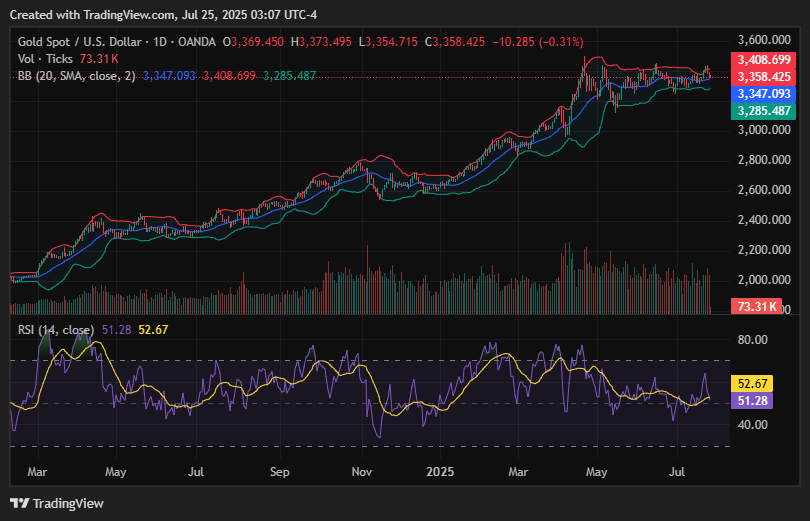
US Dollar Index (DXY) Forecast
Current Price and Context
The US Dollar Index trades near 97.55, up for a second straight session as mixed US PMI readings and resilient services data buoy the greenback. The USD is gaining traction amid risk-on flows and trade optimism, keeping equity and currency markets on alert.
Key Drivers
Geopolitical Risks: Growing optimism over potential US trade agreements with partners like Japan and the EU is shifting capital into the USD, as investors remain cautious without outright risk aversion.
US Economic Data: US flash manufacturing PMI dropped to 49.5, signaling contraction, but services PMI rose to 55.2, offsetting risks and reinforcing demand for USD as a balanced play.
FOMC Outcome: With the Fed likely to leave policy unchanged next week, markets are pricing in a 60% chance of a September rate cut—keeping short-term USD momentum moderately resilient.
Trade Policy: Progress in trade talks is supporting global risk sentiment, but residual threats of tariffs also prompt safe-haven interest in USD.
Monetary Policy: A steady Fed and sticky inflation expectations continue to underpin the dollar, with markets expecting monetary policy divergence sooner rather than later.
Technical Outlook
Trend: DXY is showing a bullish bias as it consolidates above the recent support zone near 97.50, signaling strong near-term appetite for USD.
Resistance: Immediate resistance lies in the 97.80–98.00 zone—its next significant hurdle given prior technical confluence.
Support: Near-term support is anchored at 97.50, where the 9-day EMA and recent support lines help buffer downside pressure.
Forecast: If US data continues to show strength in services or trade news stays constructive, DXY could test higher near 98.00. A drop beneath 97.50 might expose levels toward 97.00.
Sentiment and Catalysts
Market Sentiment: Sentiment is cautiously optimistic—supportive of USD amid mixed macroeconomic readings and trade optimism, but still bounded due to looming tariff uncertainty.
Catalysts: Key upcoming US economic releases—such as durable goods data, S&P Global PMIs, and labor reports—alongside FOMC minutes and trade developments will be critical to the dollar’s next directional move.
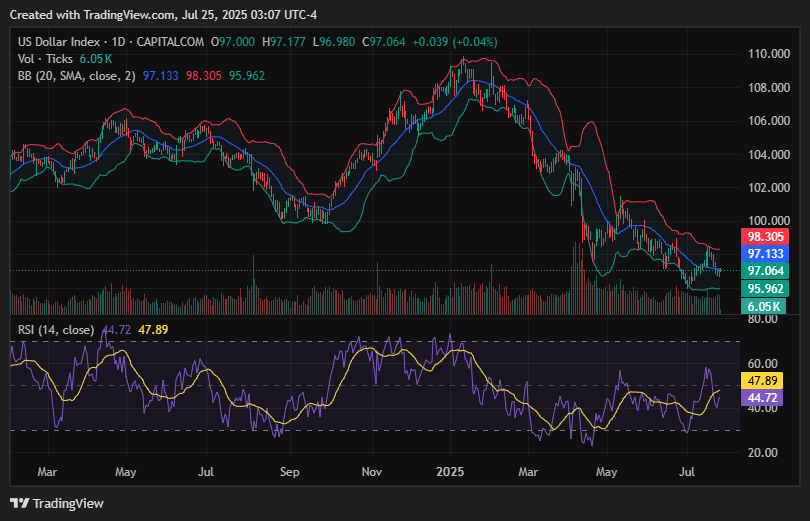
AUD/USD Forecast
Current Price and Context
AUD/USD retreated to around 0.6570, pulling back from recent eight-month highs near 0.6625–0.6630. The decline reflects renewed strength in the US Dollar amid trade-related developments and profit-taking following a week of strong Aussie gains.
Key Drivers
Geopolitical Risks: Uncertainty around potential new U.S. tariffs and evolving trade negotiations—especially involving China and Japan—has raised investor caution, increasing safe-haven flows into the USD.
US Economic Data: Mixed U.S. PMI figures and resilient services data have reinforced demand for the dollar, limiting AUD/USD’s upside and contributing to downward pressure on the pair.
FOMC Outcome: Markets anticipate a steady Fed policy path into next month, keeping yields elevated and supporting USD strength—thus weighing on derived risk-sensitive currencies like AUD.
Trade Policy: While optimism over trade deals lifted AUD earlier in week, the emergence of U.S. tariff letters and evolving bilateral trade clarity has shifted sentiment. This has created a dual headwind: EUR/JPY and USD/CNY moves also reflect the uncertain trade backdrop.
Monetary Policy: Despite strong domestic PMI data, the Reserve Bank of Australia has signaled caution, delaying any rate cut decision and reinforcing AUD’s sensitivity to external USD-positive pressures.
Technical Outlook
Trend: The short-term trend has turned bearish as the pair retreats from swing highs around 0.6625–0.6630, now consolidating nearer 0.6570.
Resistance: Resistance is near 0.6600–0.6625, which recently marked the breakout to an eight‑month peak.
Support: Immediate support lies at 0.6550, followed by 0.6520, which aligns with the 9-day EMA and previous higher lows.
Forecast: If the USD remains buoyant and U.S. trade uncertainties persist, AUD/USD could gravitate toward 0.6520–0.6500. Holding above 0.6550 would keep the outlook cautiously neutral, pending fresh trade or RBA cues.
Sentiment and Catalysts
Market Sentiment: Sentiment has flipped from risk-on to neutral-cautious toward AUD, reflecting profit-taking after a strong rally and renewed USD demand.
Catalysts: Key drivers ahead include Australian PMI updates, the next tranche of U.S. tariff letters, RBA commentary, and global risk indicators. Investor focus is also on upcoming U.S. durable goods and PPI releases.
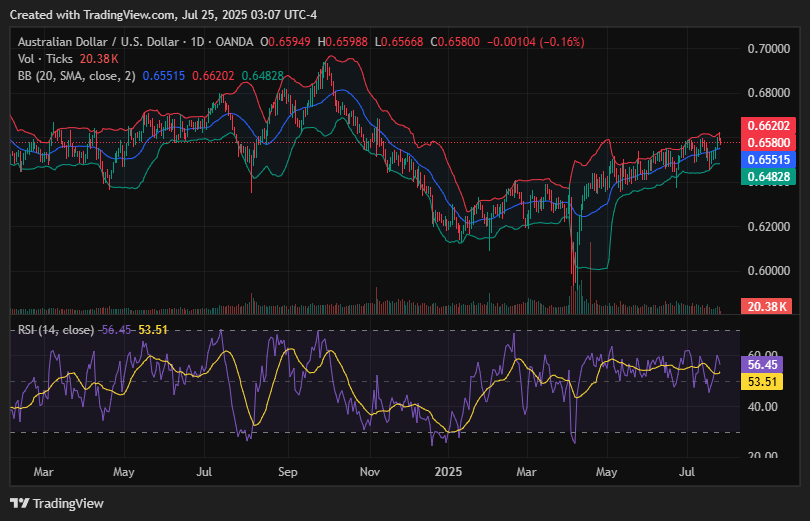
NZD/USD Forecast
Current Price and Context
NZD/USD is trading near 0.6035, maintaining gains above the 0.6000 threshold amid broad trade optimism. Improved sentiment related to ongoing US-China and broader global trade talks continues to support the Kiwi, while the US Dollar remains relatively soft at present.
Key Drivers
Geopolitical Risks: Easing trade tensions—such as potential tariff extensions between the US and China—are positively impacting risk sentiment, which favors the NZD over USD. Continued progress in bilateral deals, especially involving New Zealand’s major trading partners, provides additional support.
US Economic Data: Mixed readings, including a flash manufacturing PMI at 49.5 but a stronger services PMI of 55.2, have kept the USD rangebound and allowed the Kiwi to outperform.
FOMC Outcome: With markets pricing in around a 60% chance of a Fed rate cut in September, USD demand remains muted, aiding NZD gains.
Trade Policy: Optimism around potential US-Japan and US-EU tariff cap agreements (around 15%) is uplifting sentiment and bolstering export-linked currencies like the NZD.
Monetary Policy: Though domestic CPI has cooled, keeping the RBNZ dovish, NZD is benefiting from external trade dynamics rather than firm local policy shifts.
Technical Outlook
Trend: The short-term trend is positive, marked by a solid break and hold above the 0.6000 psychological level.
Resistance: Near-term resistance resides at 0.6055, with the next zone around 0.6070–0.6100 if trade-positive catalysts persist.
Support: Key support lies at 0.6000, followed by a lower zone around 0.5975–0.5950, where previous consolidation occurred.
Forecast: Sustained risk-on conditions and positive trade developments may push NZD/USD toward 0.6100. A drop below 0.6000 would risk reversing momentum and inviting deeper pullbacks.
Sentiment and Catalysts
Market Sentiment: Risk sentiment remains upbeat, with traders favoring pro-growth and trade-exposed currencies like the Kiwi, especially in the absence of renewed USD strength.
Catalysts: Key upcoming events include US durable goods data, PMI indices, further trade negotiation developments—especially involving China—and RBNZ commentary that may influence Kiwi performance.
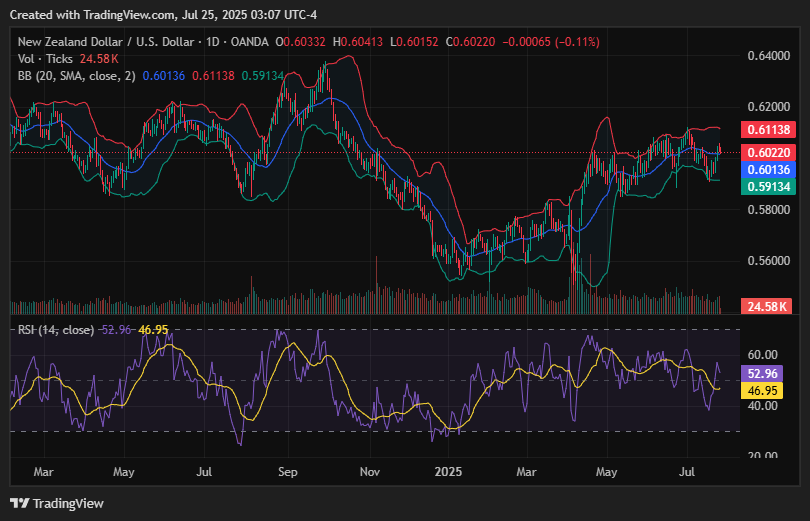
EUR/JPY Forecast
Current Price and Context
EUR/JPY remains anchored near 173.10, extending gains for a seventh consecutive session as softer Tokyo inflation tempers expectations for immediate BoJ tightening. Broad USD weakness, amid upbeat trade sentiment and optimistic equity flows, has lifted the cross, while the euro benefits from firm-side European data.
Key Drivers
Geopolitical Risks: Softer inflation data in Japan, coupled with domestic political uncertainty, has dimmed appetite for the yen in safe-haven flows. Meanwhile, trade optimism is tilting sentiment toward growth assets.
US Economic Data: Mixed U.S. figures continue to weigh on the dollar, enabling EUR/JPY to maintain elevated levels while providing a favorable backdrop for euro-zone exposure.
FOMC Outcome: Moderate U.S. rate views and reduced upside for the dollar are contributing to EUR strength against the yen and USD alike.
Trade Policy: Progress in bilateral trade negotiations, particularly U.S.–Japan developments, is enhancing risk appetite and boosting EUR/JPY momentum.
Monetary Policy: The BoJ remains cautious despite persistent inflation above the 2% target, implying delayed rate action—supporting EUR/JPY upside via yield differential.
Technical Outlook
Trend: EUR/JPY retains a bullish structure, trading above the 100-day EMA with confirmed higher highs and lows.
Resistance: Resistance comes into play at 173.50, with the next potential target around 174.50–175.00 if momentum persists.
Support: Support lies near 172.80, followed by more substantial support at 172.00–171.00, where buyers have historically emerged.
Forecast: Unless fresh yen-strengthening catalysts emerge, EUR/JPY may attempt a run toward 174.00–174.50. However, overbought conditions suggest potential consolidation near current levels.
Sentiment and Catalysts
Market Sentiment: Risk-on sentiment remains intact, favoring cross-currencies like EUR/JPY amid broader USD softness and reduced yen demand.
Catalysts: Upcoming Japanese national CPI data, further Tokyo regional inflation updates, U.S. macro releases, and trade headlines—especially U.S.–Japan dialogues—will influence the next directional leg.
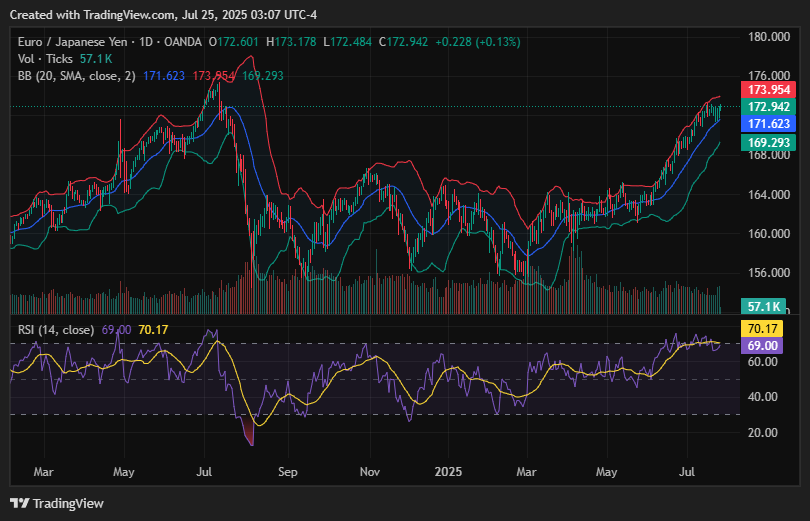
Wrap-up
Overall, the Dollar’s renewed momentum dominated Friday’s session, sending gold prices lower and weighing on key commodity-linked currencies like the AUD. NZD managed to stay resilient, while EUR/JPY remained supported post-CPI. With market focus turning toward upcoming inflation figures and central bank commentary, volatility is likely to persist into the weekend.
Ready to trade global markets with confidence? Join Moneta Markets today and unlock 1000+ instruments, ultra-fast execution, ECN spreads from 0.0 pips, and more! Start now with Moneta Markets!





















